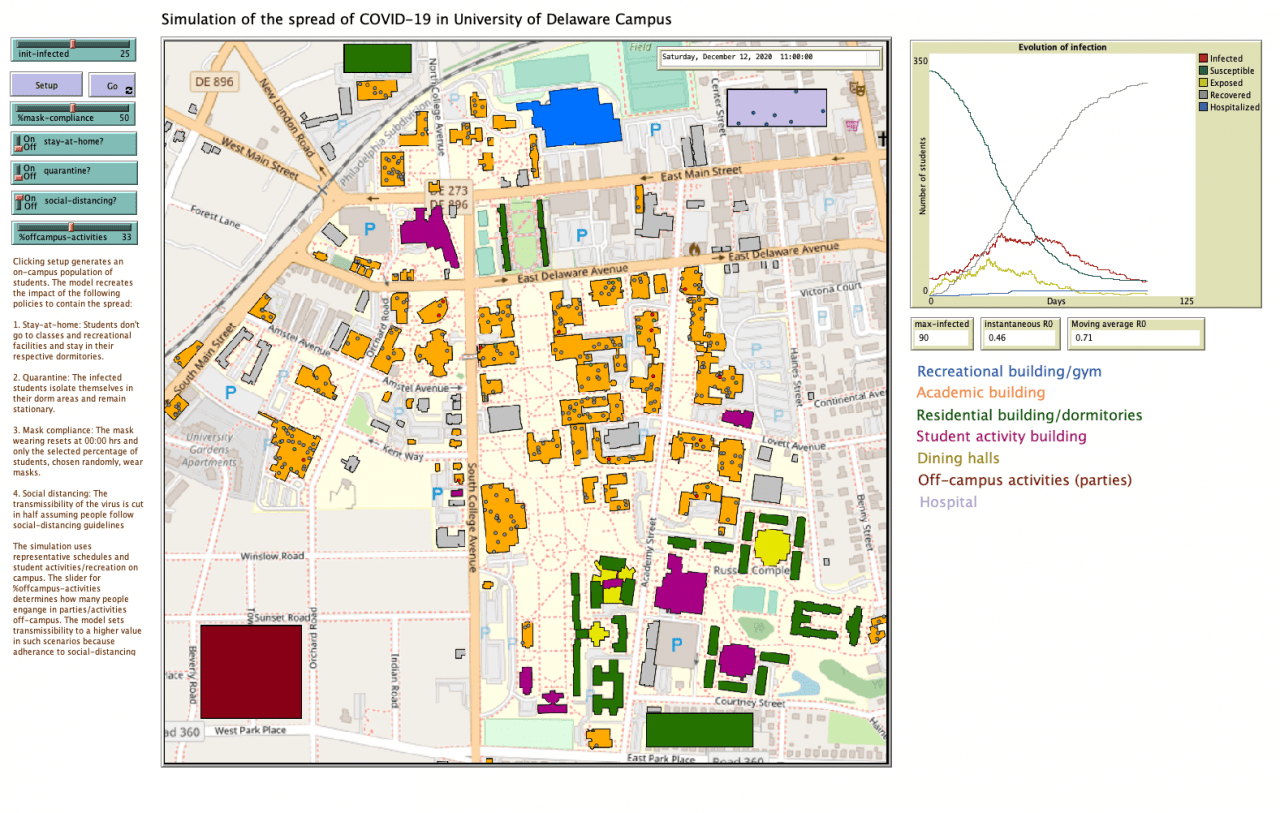2022 Annual Meeting
(417g) Agent-Based Modeling of Sars-Cov-2 Transmission during the COVID-19 Pandemic at the University of Delaware
Authors
Wagner, N. J. - Presenter, University of Delaware
Jariwala, S., University of Delaware
Beris, A., University Of Delaware
Suminski, R., University of Delaware
Dominick, G., University of Delaware
Decision making and policy setting by universities and localities during the Covid-19 pandemic requires knowledge of how people move and interact in their environment. This program adapts new scientific approaches in agent-based population balance modeling developed under the auspices of the National Science Foundation (RAPID CBET #2040503) to model human movement and interaction at the University of Delaware with the goal of providing new tools to help in developing rational strategies for mitigation and control of the transmission of the novel corona virus, as well as future biological threats. A netlogo model was developed for the University of Delaware campus. Data for the model input are obtained from high-definition video footage of public, outdoor areas including green spaces/parks, sidewalks/streets, and campus walkways/congregating spaces analyzed by artificial intelligence algorithms [1, 2]. The model treats a subset of the students and follows their movement in 15 minute steps throughout the semester with allowances for viral transmission rates, mask wearing and social distancing. Statistical data are collected for a broad range of scenarios and compared against data from UD Covid-19 testing and wastewater testing. The statistical results also enable determining key parameters such as the base replication rate R0 needed for more traditional SEIR type epidemiological models. The results of this agent-based epidemiological modeling and surveillance data collection were developed into a dashboard for use by policy makers as well as for public education about various mitigation strategies. The results of this NSF RAPID project are documented on the web site https://sites.udel.edu/udcovidmodel/ to provide a computational tool and example for use more broadly by communities and in additional and future, challenging public health issues. In addition, a K-12, weblogo based, educational model was developed for classroom use by K-12 educators and students alike, along with study guides and educational materials.
- Suminski, R.R., et al., Direct Observation of COVID-19 Prevention Behaviors and Physical Activity in Public Open Spaces. International Journal of Environmental Research and Public Health, 2022. 19(3): p. 1335.
- Suminski, R.R., G.M. Dominick, and N.J. Wagner, A Direct Observation Video Method for Describing COVID-19 Transmission Factors on a Micro-Geographical Scale: Viral Transmission (VT)-Scan. International Journal of Environmental Research and Public Health, 2021. 18(17): p. 9329.

